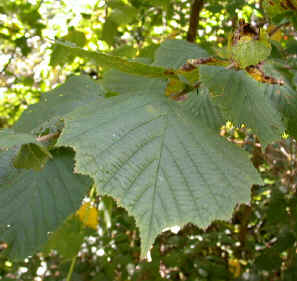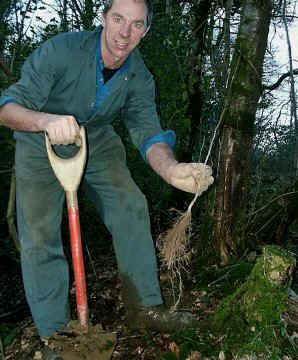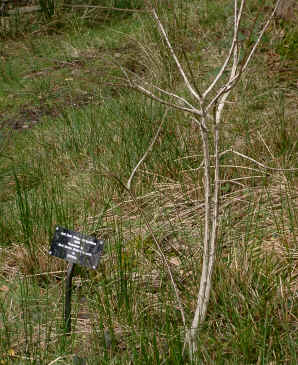 |
If a woodland is being
planted for conservation purposes, native tree species should always be planted in
preference to non-native. They will support a much greater variety of life than non-native
trees. This does not only apply to invertebrates and lichens (table)
but also to many other organisms such as fungi. It is also desirable to source seedlings of local provenance, i.e. originating from the local area. These will already be adapted to local conditions. Some tree seedlings supplied in nurseries, although native species, may for example, be of European origin. The large-leafed Hazel (left) is of European, rather than English provenance. In this case, the general ecology and inter-relationships of the plants with other species may be subtly different to local varieties. |
| . | |
 |
The spacing between planted
seedlings will depend on the tree species involved, as well as on the intended purpose of
the woodland. Where timber production is the aim, tree seedlings will be planted closer
together to discourage competition from other plant species. (Note the other plants
competing with the young trees in the picture on the left.) Once the seedlings grow up and the canopies touch, other plants will be limited because of the lack of light underneath. This reduces the cost of controlling 'weed' species. It also encourages the trees to produce one tall straight trunk, with fewer side branches, because the young trees are also in competition with each other. If conservation is the aim for a particular woodland, then it is advantageous to plant the young seedlings much further apart. This will guarantee higher light levels beneath the developing tree canopy. This in turn will allow a greater variety of herbaceous plants to flourish on the woodland floor, encouraging higher biodiversity. It is worth checking with nurseries supplying seedlings, whether suggested planting distances have been recommended for forestry purposes. |
| . | |
 |
The size of young
trees to be planted will depend on the site itself, as well as economic considerations. If
the ground can be well prepared, then larger plants with well developed root systems can
be planted. Where weed growth is a problem, such plants will compete better than smaller
ones. On the other hand, if the site is very exposed, then smaller trees can be
established more readily than larger ones. Larger planting stock is subject to greater checks in its growth because of the trauma of movement and reestablishment on the new site. Great care has to be taken with all new plantings, in order to avoid damaging or drying out the roots. This all adds to the cost of establishment.
|
| . | |
 |
Trees are sold in
various size groups. The smallest is a seedling, which is a plant that has not been moved
from the seedbed prior to planting on the new site. Transplants are seedlings which have
been transferred to wider spacing in a secondary bed and then grown on. This provides more
space and results in larger, stronger stock. Transplants are categorized by age. For
example, a '1 + 1' has grown one year in a seed bed and one year in a transplant bed. An alternative method to transplanting is to wide sow the seed bed and
undercut the plants in situ. Undercutting involves mechanically slicing through the root
system. This encourages extensive root growth. A plant which has been undercut might be
described as a The next biggest type is called a whip. This is a plant which has remained in the nursery until it is somewhere between 120 - 210 cm tall, depending on species. The largest young trees are known as standards or half standards. This size is typically used for fruit trees or amenity planting. |